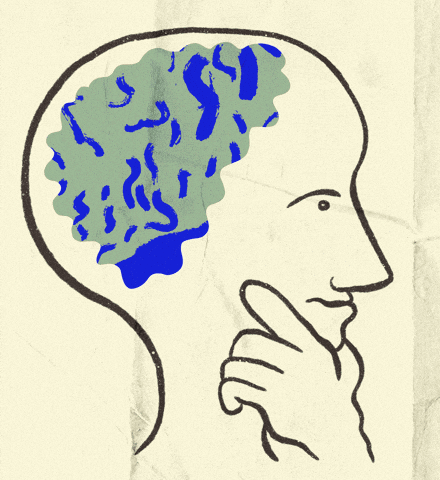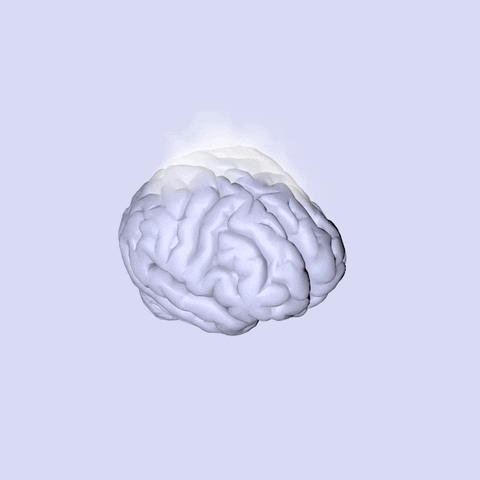publications
* indique une contribution égale et une co-auteur principal
Veuillez consulter Google Scholar pour une liste plus à jour de mes publications.
articles de revues à comité de lecture
2025
- Protocol ECR
.gif) Contemporary Clinical Trials
Contemporary Clinical Trials
Jun 30, 2025- Study protocol elaborates on RCT investigating the efficacy of a novel digital intervention
- Minds@Work-QWL aims to enhance overall quality of work life in adults living with ADHD
- Program targets job satisfaction, psychological needs and well-being, self-esteem, self-efficacy, cognitive functioning, self-compassion, and quality of work relationships.
Background: While psychosocial interventions for ADHD in children are well-established, there is a gap in addressing ADHD symptoms that persist into adulthood, particularly those impacting occupational functioning. Adults living with ADHD often face challenges in the workplace related to time management, regulating attention, task prioritization, and meeting deadlines. Methods: This study will evaluate the efficacy of a workplace intervention designed to improve the quality of work life in adults living with possible ADHD. A single-blind randomized controlled trial will compare an 8-week virtual psychosocial intervention to an active control group, with quality of work life as the primary outcome. Secondary outcomes will include self-reported measures related to work such as job satisfaction, psychological needs and well-being, self-esteem, self-efficacy, cognitive functioning, self-compassion, and quality of work relationships. Outcomes will be assessed at baseline, post-intervention, and at 3, 6, 9, and 12-month follow-up. In parallel, an optional awareness raising video will engage workplace stakeholders to improve ADHD literacy, reduce stigma, and offer neuroinclusive management strategies. Intention-to-treat analyses will use linear mixed-effects models. Discussion: A participatory research approach was used to co-design the intervention material with workplace managers, community representatives, service providers and adults with lived experience. The research team will disseminate findings in scientific journals, conferences, and by sharing bilingual intervention materials with service providers and adults living with ADHD. This study fills a gap in addressing ADHD in the workplace, with findings that will inform intervention practices and improve workplace inclusion. Trial registration: This study was registered at ClinicalTrials.gov (NCT06774378) on January 17, 2025.
@article{voyerEfficacy2025, title = {Efficacy of an occupational intervention for quality of work life in ADHD: A randomized controlled trial protocol}, author = {Voyer, Chloé and Corbière, Marc and Villotti, Patrizia and Stamate, Alina and Sauvé, Geneviève}, year = {2025}, month = jun, day = {30}, journal = {Contemporary Clinical Trials}, volume = {155}, doi = {10.1016/j.cct.2025.107997}, url = {https://www.sciencedirect.com/science/article/pii/S1551714425001910}, issn = {1551-7144}, pages = {107997}, dimensions = {true} } - Détresse psychologique
 Y. Wang, X. Wang, C. Voyer, F. Freddy-Ateba, A. Brunet, et 2 autres auteur·esFrontiers in Child and Adolescent Psychiatry - Developmental Psychopathology and Mental Health
Y. Wang, X. Wang, C. Voyer, F. Freddy-Ateba, A. Brunet, et 2 autres auteur·esFrontiers in Child and Adolescent Psychiatry - Developmental Psychopathology and Mental Health
Jun 27, 2025The COVID-19 pandemic resulted in severe loss of life and increased anxiety as well as fear worldwide. This study explored whether pre-pandemic exposure to varying levels of perinatal maternal adversity coupled with pandemic-related experiences are related to youth distress levels. Data from 119 youth (aged 9-17) and their mothers were analyzed to assess the interactive effects of perinatal maternal adversity and pandemic-related objective hardship on youth psychological distress. Youth-reported hardship models consistently explained more variance in their psychological distress. Youth-reported hardship, specifically daily life changes, predicted psychological distress, including PTSD symptoms and peritraumatic experiences during the pandemic. Youths exposed to high perinatal maternal socio-environmental adversity demonstrated resilience when faced with pandemic disruptions, suggesting that alignment between early adversity and later stress can mitigate distress during crises.
@article{wangPsychologicalDistressMAVAN2025, title = {Interactive effect of prenatal adversity and COVID-19 hardship on youth psychological distress: A longitudinal study}, author = {Wang, Yifan and Wang, Xinni and Voyer, Chloé and Freddy-Ateba, François and Brunet, Alain and Wazana, Ashley and Laplante, David P.}, year = {2025}, month = jun, day = {27}, journal = {Frontiers in Child and Adolescent Psychiatry - Developmental Psychopathology and Mental Health}, volume = {4}, doi = {10.3389/frcha.2025.1581135}, url = {https://www.frontiersin.org/journals/child-and-adolescent-psychiatry/articles/10.3389/frcha.2025.1581135}, issn = {2813-4540}, dimensions = {true} }
2024
- TDAH@travail
 A. Hotte-Meunier, L. Sarraf, A. Bougeard, F. Bernier, C. Voyer, et 6 autres auteur·esNeurodiversity
A. Hotte-Meunier, L. Sarraf, A. Bougeard, F. Bernier, C. Voyer, et 6 autres auteur·esNeurodiversity
Nov 8, 2024- Workers with ADHD can effectively transform what are typically seen as challenges into workplace assets when given the right environment and support structures
- The success of employees with ADHD is heavily dependent on person-environment fit, suggesting that the traditional “one-size-fits-all” workplace model needs to be reconsidered
- Across over 68,000 individuals in 22 countries, findings consistently showed that embracing neurodiversity and implementing flexible working practices leads to better outcomes than trying to “fix” ADHD traits.
Attention-deficit/hyperactivity disorder (ADHD) has a significant impact on psychosocial and occupational functioning. Sixty-five percent of children with ADHD continue to meet full or partial diagnostic criteria for ADHD in adulthood, and an estimated 4% of the workforce has a diagnosis of ADHD. We performed a systematic literature review to understand the experience of ADHD in the workplace. Articles were included in the systematic literature review if they reported results on employment outcomes of adults with ADHD. Methodological quality assessment was evaluated using the Mixed Methods Appraisal Tool. Seventy-nine studies were included in this systematic literature review (NADHD = 68,275). Results were synthesized into four categories: challenges, strengths, adaptations, and sex differences. Eight themes were included: ADHD symptoms at work, workplace performance, job satisfaction, maladaptive work thoughts and behaviors, interpersonal relationships at work, personal strengths, embracing ADHD, person-environment fit, and accommodations and support. Workers with ADHD can adapt and thrive in employment with the right person-environment fit, and accommodations and support. Many challenges related to ADHD can be remodeled into assets in a workplace environment that promotes flexible working practices and openness to neurodiversity.
A systematic review of 79 studies (68,275 ADHD participants) found that while ADHD presents workplace challenges, employees with ADHD can thrive when provided appropriate accommodations and support. Success depends on both leveraging ADHD-related strengths and creating neurodiversity-friendly work environments.
@article{hottemeunierADHDStrengthsChallenges2024, title = {Strengths and challenges to embrace attention-deficit/hyperactivity disorder in employment—A systematic review}, author = {Hotte-Meunier, Adèle and Sarraf, Lisa and Bougeard, Alan and Bernier, Félicia and Voyer, Chloé and Deng, Jiaxuan and El Asmar, Stéphanie and Stamate, Alina and Corbière, Marc and Villotti, Patrizia and Sauvé, Geneviève}, year = {2024}, month = nov, day = {8}, journal = {Neurodiversity}, volume = {2}, pages = {1-13}, doi = {10.1177/27546330241287655}, url = {https://doi.org/10.1177/27546330241287655}, osf = {https://osf.io/rbnf4}, dimensions = {true} }
2023
- Biais cognitifs
 Transdiagnostic cognitive biases in psychiatric disorders: A systematic review and network meta-analysis
Transdiagnostic cognitive biases in psychiatric disorders: A systematic review and network meta-analysis
[Special issue]Progress in Neuro-Psychopharmacology & Biological Psychiatry
Feb 8, 2023- Prevalence of cognitive biases were assessed across 19 biases and 21 diagnoses
- Overall, patients showed more severe biases than controls
- Bias severity was associated with transdiagnostic symptom dimensions
- Network meta-analysis identified variability in bias severity across diagnoses
- Cognitive biases show similar transdiagnostic features to cognitive deficits.
Psychiatric disorders are characterized by cognitive deficits, which have been proposed as a transdiagnostic feature of psychopathology ("C" factor). Similarly, cognitive biases (e.g., in attention, memory, and interpretation) represent common tendencies in information processing that are often associated with psychiatric symptoms. However, the question remains whether cognitive biases are also transdiagnostic or are specific to certain psychiatric disorders/symptoms. The current systematic review sought to address whether the proposed "C" factor of transdiagnostic cognitive dysfunction in psychopathology can be extended to cognitive biases. Overall, 31 studies comprising 4401 participants (2536 patients, 1865 non-clinical controls) met inclusion criteria, assessing 19 cognitive biases across 20 diagnostic categories, with most studies focusing on interpretation (k = 22) and attention (k = 11) biases and only 2 assessing memory biases. Traditional meta-analyses found a moderate effect size (g = 0.32) for more severe cognitive biases in all patients relative to non-clinical controls, as well as small but significant associations between interpretation biases and transdiagnostic symptom categories (general psychopathology: r = .20, emotion dysfunction: r = .17, psychotic symptoms: r = .25). Network meta-analyses revealed significant patient versus non-clinical control differences on attention and interpretation biases across diagnoses, as well as significant differences between diagnoses, with highest severity in panic disorder for attention biases and obsessive-compulsive disorder for interpretation biases. The current findings extend the big "C" interpretation of transdiagnostic cognitive dysfunction in psychiatric disorders to cognitive biases and transdiagnostic symptom dimensions. Results also suggest that while the presence of cognitive biases is transdiagnostic, bias severity differs across diagnoses, as in traditional neurocognitive deficits.
@article{lavigneTransdiagnosticCognitiveBiases2024, title = {Transdiagnostic cognitive biases in psychiatric disorders: A systematic review and network meta-analysis}, author = {Lavigne, Katie and Deng, Jiaxuan and Raucher-Chéné, Delphine and Hotte-Meunier, Adèle and Voyer, Chloé and Sarraf, Lisa and Lepage, Martin and Sauvé, Geneviève}, year = {2023}, month = feb, journal = {Progress in Neuro-Psychopharmacology & Biological Psychiatry}, volume = {129}, number = {6}, pages = {403-404}, doi = {10.1016/j.pnpbp.2023.110894}, issn = {0278-5846}, url = {https://doi.org/10.1016/j.pnpbp.2023.110894}, dimensions = {1165871989} }
actes de conférence
pré-impressions
2024
- Maintien en emploi
 *K. Shulman, *M. Hannon, C. Voyer, E. Gagliano, N. Hannaoui, et 4 autres auteur·esAug 2024
*K. Shulman, *M. Hannon, C. Voyer, E. Gagliano, N. Hannaoui, et 4 autres auteur·esAug 2024Studying mental health in the context of employment often focuses on individual disorders, potentially overlooking underlying commonalities across different conditions. A transdiagnostic perspective recognizes that certain aspects of job tenure may have broad-reaching implications for employability services that cut across multiple mental health disorders. This scoping review seeks to identify common predictors of job tenure in people living with a mental health disorder from a transdiagnostic approach. The study protocol followed JBI guidelines and was registered on the Open Science Framework platform. The search strategy involved comprehensive searches in electronic databases such as Embase, MEDLINE, and APA PsycINFO. A total of 8,796 abstracts were extracted and uploaded to Covidence for screening. Eligibility criteria will be discussed in the final report. This scoping review aims to highlight predictors of job tenure, such as cognitive and social skills deficits, negative symptoms, scarcity of accommodations, and lack of support inside and outside the workplace, that span multiple mental health disorders. Ideally, identifying predictors will fill gaps in the literature and guide support strategies in order to increase job tenure across diverse psychiatric conditions.
@preprint{shulmanProtocolScopingReview2024, title = {Protocol for a scoping review on predictors of job tenure in people living with mental illness from a transdiagnostic perspective}, author = {Shulman, Kayla and Hannon, Maya and Voyer, Chloé and Gagliano, Emily and Hannaoui, Nada and Hotte-Meunier, Adèle and Lavigne, Katie and Raucher-Chéné, Delphine and Sauvé, Geneviève}, year = {2024}, month = aug, journal = {Open Science Framework}, doi = {10.17605/osf.io/bnjz3}, url = {https://doi.org/10.17605/osf.io/bnjz3}, osf = {https://osf.io/rp97e}, }
2023
- Biais cognitifs
 Transdiagnostic cognitive biases in psychiatric disorders: A systematic review and network meta-analysis
Transdiagnostic cognitive biases in psychiatric disorders: A systematic review and network meta-analysis
[Special issue]Jul 2023- Prevalence of cognitive biases were assessed across 19 biases and 21 diagnoses
- Overall, patients showed more severe biases than controls
- Bias severity was associated with transdiagnostic symptom dimensions
- Network meta-analysis identified variability in bias severity across diagnoses
- Cognitive biases show similar transdiagnostic features to cognitive deficits.
Psychiatric disorders are characterized by cognitive deficits, which have been proposed as a transdiagnostic feature of psychopathology ("C" factor). Similarly, cognitive biases (e.g., in attention, memory, and interpretation) represent common tendencies in information processing that are often associated with psychiatric symptoms. However, the question remains whether cognitive biases are also transdiagnostic or are specific to certain psychiatric disorders/symptoms. The current systematic review sought to address whether the proposed "C" factor of transdiagnostic cognitive dysfunction in psychopathology can be extended to cognitive biases. Overall, 31 studies comprising 4401 participants (2536 patients, 1865 non-clinical controls) met inclusion criteria, assessing 19 cognitive biases across 20 diagnostic categories, with most studies focusing on interpretation (k = 22) and attention (k = 11) biases and only 2 assessing memory biases. Traditional meta-analyses found a moderate effect size (g = 0.32) for more severe cognitive biases in all patients relative to non-clinical controls, as well as small but significant associations between interpretation biases and transdiagnostic symptom categories (general psychopathology: r = .20, emotion dysfunction: r = .17, psychotic symptoms: r = .25). Network meta-analyses revealed significant patient versus non-clinical control differences on attention and interpretation biases across diagnoses, as well as significant differences between diagnoses, with highest severity in panic disorder for attention biases and obsessive-compulsive disorder for interpretation biases. The current findings extend the big "C" interpretation of transdiagnostic cognitive dysfunction in psychiatric disorders to cognitive biases and transdiagnostic symptom dimensions. Results also suggest that while the presence of cognitive biases is transdiagnostic, bias severity differs across diagnoses, as in traditional neurocognitive deficits.
@preprint{lavigneTransdiagnosticCognitiveBiases2025, title = {Transdiagnostic cognitive biases in psychiatric disorders: A systematic review and network meta-analysis}, author = {Lavigne, Katie and Deng, Jiaxuan and Raucher-Chéné, Delphine and Hotte-Meunier, Adèle and Voyer, Chloé and Sarraf, Lisa and Lepage, Martin and Sauvé, Geneviève}, year = {2023}, month = jul, doi = {10.31234/osf.io/te6fx}, url = {https://doi.org/10.31234/osf.io/te6fx}, osf = {https://doi.org/10.31234/osf.io/te6fx}, }
manuscrits en préparation
2025
- Compétences du futur
 Development and validation of the Contemporary Workplace Skills Inventory (CWSI) for the post-pandemic workforce in a French-Canadian sampleC. Voyer, J. Deng, et G. SauvéOct 2025
Development and validation of the Contemporary Workplace Skills Inventory (CWSI) for the post-pandemic workforce in a French-Canadian sampleC. Voyer, J. Deng, et G. SauvéOct 2025The COVID-19 pandemic brought in a multitude of global economic changes, particularly in skilled labor shortages. In response to contemporary changes in the job market and required skills, this study aimed to develop and validate the psychometric properties of a new assessment tool which measures workplace skills. A preliminary 32-item pool was administered to 230 participants, resulting in ten initial factors covering skills like professional development, communication, critical thinking, and inclusivity. Exploratory factor analyses showed that all factors independently explained variance, totaling 64.34% (eigenvalues > 1, factor loading > .3). After removing unstable factors (n = 4), items with no loading (n = 3), and cross-loading items (n = 1), the final 26-item self-report inventory with five factors showed good reliability (internal consistency α = .83; test–retest reliability r = [.34–.76], except for one factor, r = .13). This tool is reliable and valid for local employability organizations to assess future-oriented skills among their clientele. Further refinement is suggested for a comprehensive measurement of workplace skills, enabling targeted interventions for skills gaps and supporting the re-entry of unemployed individuals into the labor market.
@unpublished{voyerFutureWorkSkills2024, title = {Development and validation of the Contemporary Workplace Skills Inventory (CWSI) for the post-pandemic workforce in a French-Canadian sample}, author = {Voyer, Chloé and Deng, Jiaxuan and Sauvé, Geneviève}, year = {2025}, month = oct, type = {Manuscript in preparation}, } - Résilience
 Family resilience predicts COVID-19 psychopathology in youth with perinatal maternal adversityC. Voyer, X. Wang, Y. Wang, F. Freddy-Ateba, †A. Wazana, et 1 autre auteur·eOct 2025
Family resilience predicts COVID-19 psychopathology in youth with perinatal maternal adversityC. Voyer, X. Wang, Y. Wang, F. Freddy-Ateba, †A. Wazana, et 1 autre auteur·eOct 2025Background: While previous research has extensively documented the COVID‑19 pandemic’s negative impact on youth mental health, less attention has been given towards identifying markers of resilience as a protective factor against pandemic-related stressors. This study examined the role of perinatal stress in youth psychopathology outcomes and indicators of psychological resilience during the pandemic. Methods: Longitudinal data were drawn from the Maternal Adversity, Vulnerability and Neurodevelopment (MAVAN) multi-site birth cohort, using multiple informants’ assessments (i.e., mothers, youth) collected before and during the COVID‑19 pandemic from 115 youth aged 9–18 years (50.4% males; Mage = 14.4 years). Latent factor modeling examined relationships between prenatal maternal affective symptoms, perinatal socio-environmental adversity, pandemic-related family and youth resilience, and youth psychopathology. Results: We found a significant interaction between prenatal maternal affective symptoms and pandemic-related internalizing psychopathology under conditions of low maternal-reported family resilience. Additionally, several main effects of family resilience—specifically family organization patterns, caregiver resilience, and primary control coping—were associated with reduced youth psychopathology during the pandemic. Conclusion: These findings highlight the protective role of family resilience in mitigating youth psychopathology amidst pandemic-related stressors. This study emphasizes the importance of caregiver resilience and structured family organization patterns in shaping effective mitigation strategies during global crises.
- Psychopathologie des jeunes
 COVID-related daily life changes and personal threats moderates the relationship between prenatal maternal adversity and youth mental health: The MAVAN longitudinal studyX. Wang, C. Voyer, Y. Wang, F. Freddy-Ateba, †A. Wazana, et 1 autre auteur·eOct 2025
COVID-related daily life changes and personal threats moderates the relationship between prenatal maternal adversity and youth mental health: The MAVAN longitudinal studyX. Wang, C. Voyer, Y. Wang, F. Freddy-Ateba, †A. Wazana, et 1 autre auteur·eOct 2025The COVID-19 pandemic directly, and indirectly as a result of the mitigation measures, resulted in daily life disruptions. The present study examined whether youth-reported COVID-related daily life changes and personal threats experiences moderated the relationship between maternal prenatal adversity and youth psychopathology during the pandemic. The sample consisted of 91 mothers and 124 youths from the Maternal Adversity, Vulnerability, and Neurodevelopment cohort assessed between February and July 2021. Maternal prenatal adversity, youth daily life changes and personal threats, and youth psychopathology were constructed into latent variables and then included in interactive models. Results showed that youth with low or moderate levels of maternal adversity exposure in utero experienced higher levels of pandemic-related general psychopathology and specific internalizing symptoms (but not externalizing symptoms), and greater changes in these psychopathology levels compared to pre-pandemic levels when they experienced higher levels of daily life changes and/or personal threats. The greatest impact on youth psychopathology was seen in youth who experienced higher levels of mitigation disruptions to their daily lives and/or threats to their person and who experienced lower levels of exposure to maternal adversity in utero. This study also demonstrates the need to use youth-reported measures of pandemic experience, rather than relying on maternal reports as proxy measures for youth experiences.